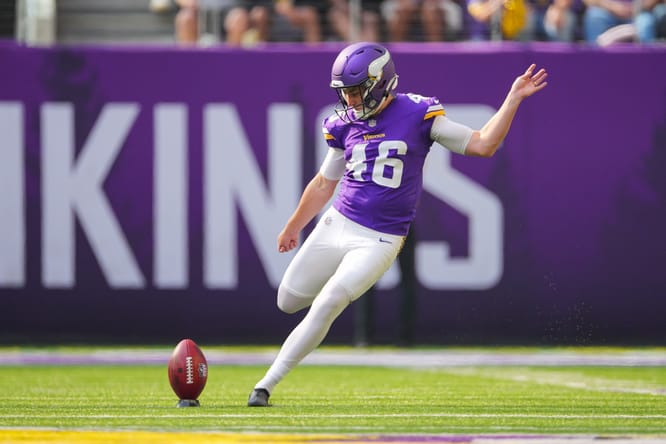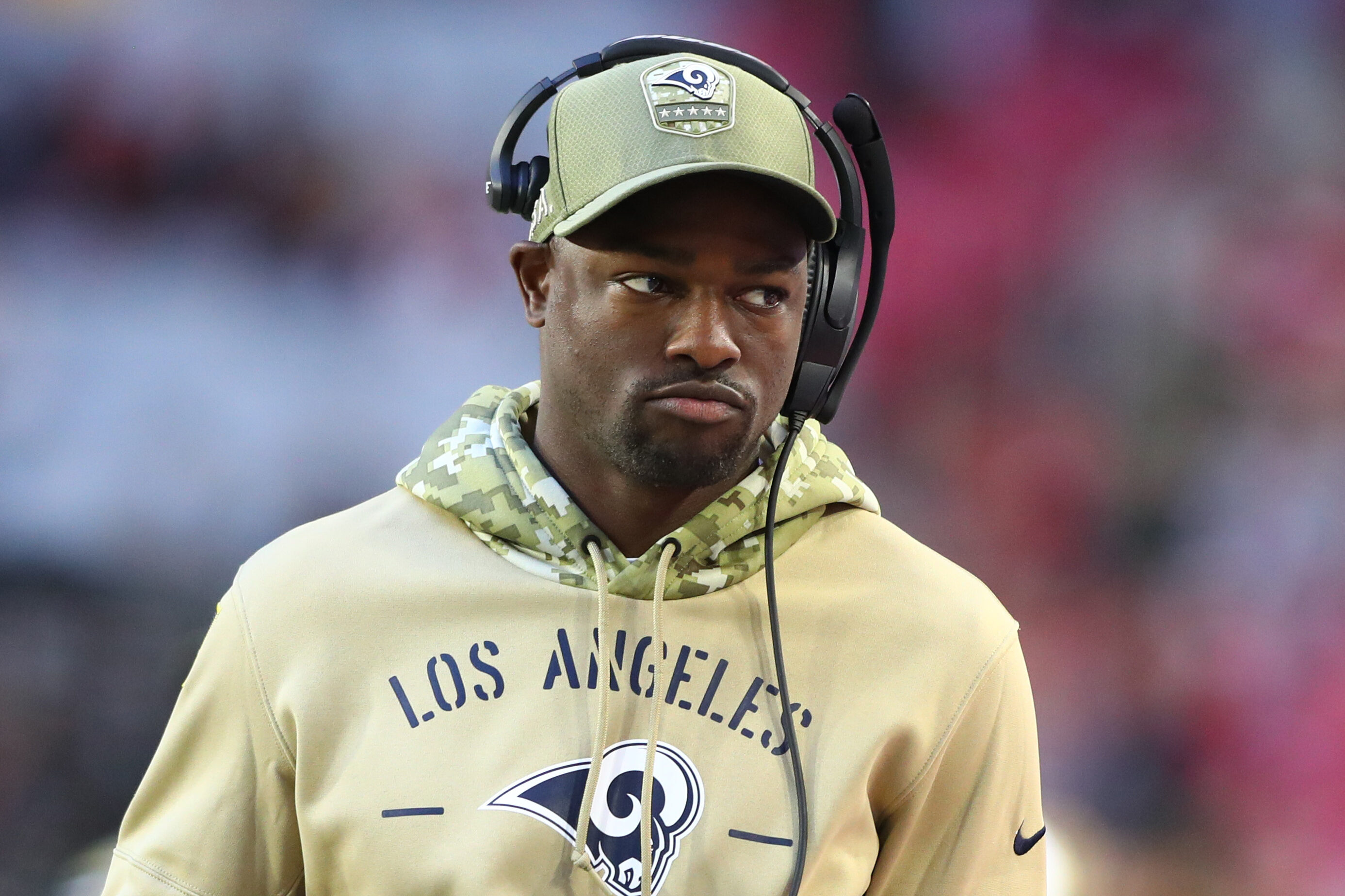How Can the Vikings Exploit the New Kickoff Rules

It was one thing to read about the new NFL kickoff rules. It’s another to actually see it in action. What can we learn after a preseason’s worth of Vikings kickoffs and kickoff returns?
First, some background: the NFL changed the kickoff rules (once again) before the 2024 season in an attempt to fix two problems with the old kickoff format: (1) too many touchbacks resulting in too few returns, and (2), too many injuries when teams did choose to return the ball. The new rules closely mirror those used in the XFL.

The new kickoff, like the old kickoff, begins with a kick from the kicking team’s 35-yard line. The difference is the position of the remainder of the kicking team: instead of lining up on the 35 with the kicker, they instead line up at the receiving team’s 40-yard line, and they are not allowed to move until the ball hits the ground or is touched by a player of the receiving team.
In the old system, kickers would typically just boot the ball out the back of the end zone for a touchback. Since the ball is kicked from the same yard line in the new system, kickers could ostensibly do the same once again, leading to a large number of touchbacks. However, this is disincentivized by analogous changes to the touchback rules.
Under the new system, there are three types of “touchbacks” (or, more accurately, two types of touchbacks and one type of infraction) that will commonly occur on a kickoff. The first occurs if the kicker kicks the ball too long so that it goes out the back of the end zone or lands in the end zone and is downed there. Under the old system, this gave the receiving team the ball at their own 25-yard line; now, it gives them the ball at the 30-yard line.

The second type of touchback occurs when the ball lands short of the goal line but bounces into the end zone and is downed by the receiving team: this gives the receiving team the ball at their own 20-yard line.
Finally, it is considered an infraction if the kickoff lands short of the receiving team’s 20-yard line or rolls out of bounds, and the ball is spotted at the receiving team’s 40-yard line.
In summary, the new kickoff presents many new possibilities, and it’s worth asking: what is the optimal strategy for the kicking team?
One option is simply to have the kicker boot the ball through the back of the end zone for a touchback, giving the opposition the ball at the 30-yard line. This seems to be a relatively easy ask of the Vikings’ new kicker, Will Reichard, who had a league-leading eight touchbacks this preseason.

The other option is to try to keep the ball in play, giving the opposing team an opportunity for a return. This preseason, Vikings opponents returned kickoffs to their own 23, 26, 19, 37, 31, 27, 31, 27, and 24-yard lines for an average starting position of 27.2 (not including yardage from illegal formation penalties, which will probably decline as teams get more accustomed to the new format).
This is slightly better than the league average starting position of 28.3, which is slightly better than the XFL average of 29.1. Thus, from the perspective of average starting position, there is a slight advantage to keeping the ball in play vs. aiming for a touchback — a good sign that the rule change was worthwhile.
Keeping the ball in play does, however, present a couple more radical possibilities that are not accounted for by a comparison of the average starting position. First, there is a possibility of a kickoff return for a touchdown, which, in terms of expected points, is slightly more valuable than an explosive kickoff return that doesn’t quite end in a touchdown.
However, no NFL team scored a touchdown on a kickoff return this preseason, and out of 341 kickoff returns in the XFL last season, only one was returned for a touchdown.

On the other hand, there is a possibility of a turnover on the return, which is an enormous advantage for the kicking team. Lost fumbles occur on roughly 2 out of every 300 running plays in the NFL, which is probably not so different from the odds of a turnover on a kickoff. Indeed, the Vikings already had an opportunity for a kickoff turnover this preseason (on a rare safety kickoff against the Browns), with Duke Shelley seemingly forcing and recovering a fumble before it was ruled out of bounds on replay.
Putting this all together, it seems that the optimal kickoff strategy is to kick the ball in bounds and give the return team a chance at a return. Surprisingly, based on XFL data, there doesn’t seem to be a huge difference in average starting position between kickoffs that land closer to the goal line and those that land closer to the 15: as long as the ball lands somewhere in that zone, the odds of a return making it past the 30 are around 30-40%, and there is a possibility of a turnover resulting in excellent field position for the kicking team.
Conversely, when it comes to returning, the optimal strategy is quite clear: down any kick that lands in the end zone for a 30-yard touchback; otherwise, return it as far as you can. The Vikings’ previous kick returner — recently waived Kene Nwangwu — had three TDs in just 68 kick returns in his Vikings career. If the Vikings kick return team can figure out how to bring that success to the new system, they could be a game-changing unit for the 2024 Vikings.
Analyzing the Lewis Cine Disaster
